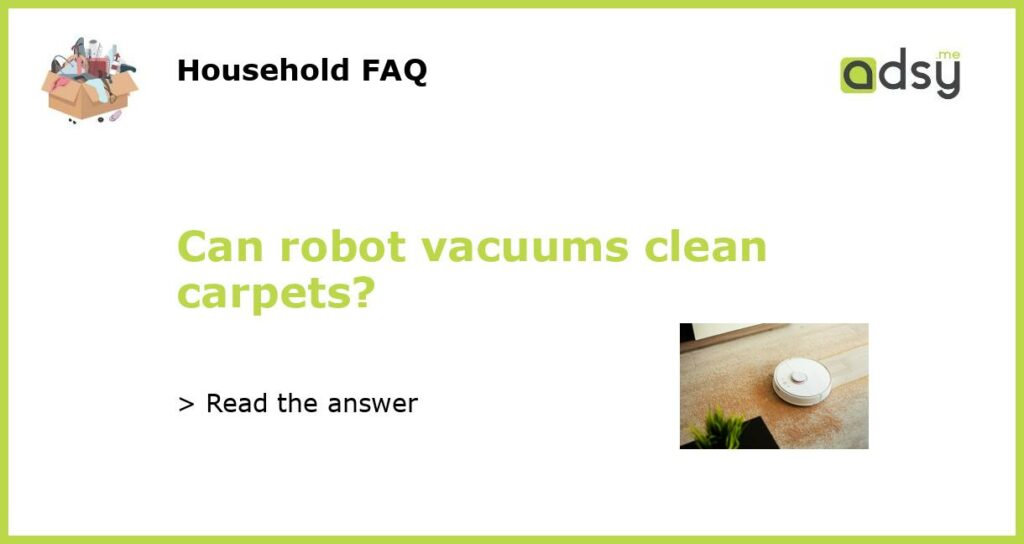Robot vacuums and their effectiveness on carpets
Robot vacuums have gained significant popularity in recent years for their convenience and efficiency in keeping our homes clean. While they are excellent at navigating hard floors and picking up debris, many people wonder whether these devices are capable of effectively cleaning carpets. In this article, we will explore the capabilities of robot vacuums when it comes to cleaning carpets and discuss their limitations.
The cleaning ability of robot vacuums on carpets
Robot vacuums are equipped with various features and technologies that allow them to clean different types of surfaces, including carpets. Many models come with strong suction power and brush rolls specifically designed to agitate and lift dirt and debris from carpets. These brush rolls, often made of bristles or rubber, work by rotating and dislodging the embedded dirt and pulling it into the vacuum’s suction path.
Additionally, some robot vacuums are equipped with sensors that detect carpeted areas and adjust their cleaning settings accordingly. These sensors can detect changes in surface height and automatically increase the suction power and brush roll rotation speed when transitioning from hard floors to carpets. This allows the robot vacuum to provide a deeper clean on carpeted surfaces.
The limitations of robot vacuums on carpets
While robot vacuums can efficiently clean carpets to a certain extent, they do have some limitations compared to traditional upright or canister vacuums. Firstly, the size and design of robot vacuums can impact their ability to clean high-pile or thick carpets effectively. The low profile and small size of robot vacuums might struggle to navigate and clean carpets with long fibers or a high pile because they may get stuck or have difficulty reaching deep into the carpet.
Secondly, the suction power of robot vacuums, although often impressive, may not match that of larger vacuum cleaners. This can lead to less effective removal of deep-seated dirt and debris and may require more frequent cleaning cycles to achieve comparable results. Additionally, the dustbin capacity of robot vacuums is typically smaller than that of traditional vacuums, so they may need to be emptied more frequently when cleaning carpets.
Optimizing the performance of robot vacuums on carpets
While robot vacuums have their limitations, there are several steps you can take to optimize their performance on carpets. Firstly, regular maintenance is essential to keep your robot vacuum working efficiently. This includes emptying the dustbin, cleaning the brush rolls, and checking for any tangled hairs or fibers that could hinder performance.
Additionally, choosing a robot vacuum with carpet-specific features such as strong suction power and adjustable brush roll settings can enhance its carpet cleaning capabilities. Some models even offer specialized carpet cleaning modes or have carpet detection technology that automatically adjusts cleaning settings for optimal efficiency.
Supplementing robot vacuum cleaning with other methods
While robot vacuums can certainly help maintain the cleanliness of your carpets, they may not completely replace the need for occasional deep cleaning. Depending on the level of dirt and stains, it may still be necessary to use traditional vacuum cleaners, carpet cleaners, or hire professional carpet cleaning services to ensure a thorough and deep clean.
Using robot vacuums as a part of your regular cleaning routine is a convenient way to keep your carpets looking fresh and free from surface debris. They can help reduce the frequency of manual vacuuming and save you time and effort in maintaining clean carpets. However, for more intensive cleaning needs, it is still recommended to supplement robot vacuum cleaning with other methods for the best results.






